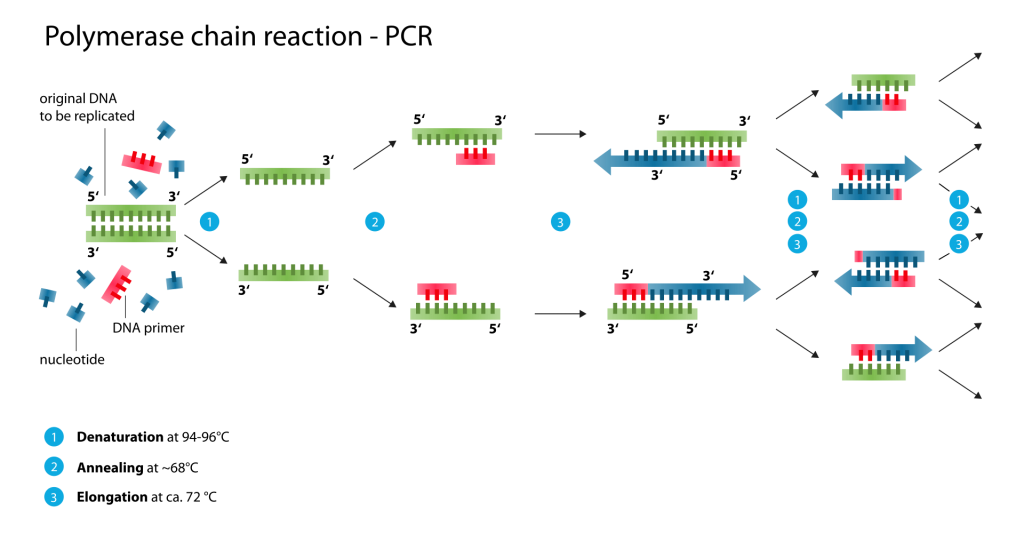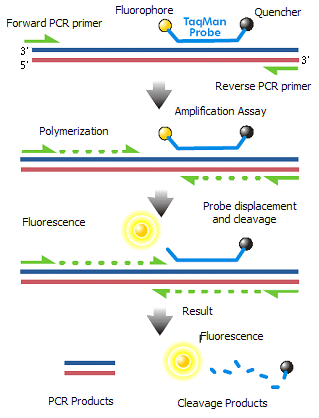COVID-19 spreads wildly all over the world, breaking our peaceful life. We are also hearing a lot of medical vocabularies that we have never heard before. This article will use the simplest word to explain what PCR is and what role he played in the epidemic.
What is PCR
Polymerase chain reaction (PCR) is a method used widely in molecular biology to make millions to billions of copies of a specific DNA sample rapidly, allowing scientists to take a very small sample of DNA (such as hair or a drop of blood) and amplify it to a large enough amount to study in detail. These jobs took days or even weeks to complete in the past, but now it takes only a few hours with PCR.
The basic principle of PCR technology is similar to the natural replication process of DNA. The semi conservation replication of DNA is an important way for biological evolution and passage. Double-stranded DNA can be denatured and untwisted into single strands under the action of various enzymes at high temperatures. When the temperature decreases later, it can be renatured and become double-stranded, so PCR is composed of three basic reaction steps:
1. Denaturation:This step is the first regular cycling event and consists of heating the reaction chamber to 94–98 °C (201–208 °F) for 20–30 seconds. This causes DNA melting, or denaturation, of the double-stranded DNA template by breaking the hydrogen bonds between complementary bases, yielding two single-stranded DNA molecules.
2.Annealing:In the next step, the reaction temperature is lowered to 50–65 °C (122–149 °F) for 20–40 seconds, allowing annealing of the primers to each of the single-stranded DNA templates.
3.Extention:In this step, the DNA polymerase synthesizes a new DNA strand complementary to the DNA template strand by adding free dNTPs from the reaction mixture that are complementary to the template. At each extension/elongation step, the number of DNA target sequences is doubled. With each successive cycle, the original template strands plus all newly generated strands become template strands for the next round of elongation, leading to exponential (geometric) amplification of the specific DNA target region.

However, there is no straight-line relation between the final PCR product and the initial template quantity, which means the initial template quantity cannot be calculated based on the final PCR product quantity. That is why we need qPCR.
What is qPCR
A real-time polymerase chain reaction (real-time PCR), also known as quantitative polymerase chain reaction (qPCR), is a laboratory technique of molecular biology based on the polymerase chain reaction (PCR).
In real-time PCR, the amount of DNA is measured after each cycle via fluorescent dyes that yield increasing fluorescent signal in direct proportion to the number of PCR product molecules (amplicons) generated.

By adding a fluorophore, it is able to continuously detect the order of appearance of the fluorescent signal and changes in signal strength, then we can analyzing the initial amount of the target gene.
it is no hard to find that PCR or qPCR technology can only be applied in study DNA. While COVID-19 is a kind of RNA viruses, so we still need RT-PCR and combined it with qPCR, also known as real-time RT-PCR.
What is RT-PCR
A reverse transcriptase (RT) is an enzyme used to generate complementary DNA (cDNA) from an RNA template, Retroviral RT has three sequential biochemical activities: RNA-dependent DNA polymerase activity, ribonuclease H (RNAse H), and DNA-dependent DNA polymerase activity
Collectively, these activities enable the enzyme to convert single-stranded RNA into double-stranded cDNA.
With this technology, we can test RNA easily

Why real-time RT-PCR be recommend in COVID-19
Good specificity: Use specific probe identify the quantitative molecules with high accuracy. At the same time, the target sequence is controlled by the primer and the probe, and the false positive is low.
High sensitivity: Real-time RT-PCR technology is a combination of RT-PCR technology and qPCR technology , fluorescent labeling technology, laser technology and digital imaging technology.
High accuracy and wide detection range: Due to the linear relationship between the generation of the fluorescent signal and each amplification product, the product can be directly quantified by the detection of the fluorescent signal; the quantitative range can be 0-1010 copies / ml.
Simple, safe and pollution-free operate: Amplification and detection can be carried out in the same tube. No need to open the cap, which is not easy to contaminate. At the same time, the amplification and detection are completed in one step, no post-processing is needed, and there is no need to worry about radioactive contamination.
Fast speed and high throughput: Quantitative analysis of 96 samples(Maximum) can be completed within few hours.(Not all real-time RT-PCR have 96 control, but also 16/32/48)



